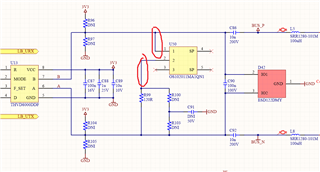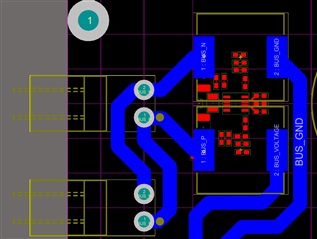Dear Hao,
when interfacing THVD8000 to MSP430 UART interface, the R should be connected to UART_TX and the D to UART_RX is that correct?
Do we need pull-up or pull- down resistors on D and R pins?
And also in the THVD8000EVM there is a 15of on R and 50Ohm + 10kOhm pull-down on D pin , what is thee need 15pf and 50ohm components?
What is the purpose of the 15k and 12k4 resistors on B and A pins?
Best Regards,
David.






